Get branding tips and expert advice delivered straight to your inbox.
Many brands prefer cloud-based DAM software because it’s:
- Convenient — you can rely on the DAM vendor for maintenance and updates.
- Secure — SaaS DAMs use reliable hosting providers and stringent security and data management features.
- Configurable (and scalable) — you can set up the platform around your needs and adjust it as you grow.
- Easily accessible — storing your digital assets in the cloud means you can access content from any online device (like your mobile phone or tablet). We also mean “accessible” in the sense that online DAMs are usually user-friendly and easy to adopt. You can onboard internal teams and add remote users without challenges.
That’s why most DAM vendors have shifted resources away from on-premise solutions (these are few and far between) to focus attention on their online offerings. Our DAM, Brandfolder, and most names on software review sites, like Canto, Bynder, Widen, and MediaValet, are all online DAM solutions.
But considering all the above benefits: there are certain expectations to consider when evaluating SaaS DAMs.
Not only do SaaS brands need to provide a high-quality (secure, flexible, accessible) product, but support is also a big element. These brands need to deliver top-notch customer service. For example, any reliable DAM vendor should offer guidance through onboarding, experts to answer questions and help with updates, and handy resources like training tutorials.
So we put together this review guide with more details on the top DAM brands, including background about each DAM product and feedback from customer reviews, so you can compare online digital asset management software and find the right one.
We kick off the guide with a review of Brandfolder — our DAM platform is cloud-based and highly customizable to accommodate a vast range of business needs. We have an award-winning customer service team to configure Brandfolder to your specifications and optimize the DAM as your business evolves.
Schedule a free demo to see how Brandfolder can support your teams.
1. Brandfolder: Cloud-Based, Customizable DAM Software for All Teams
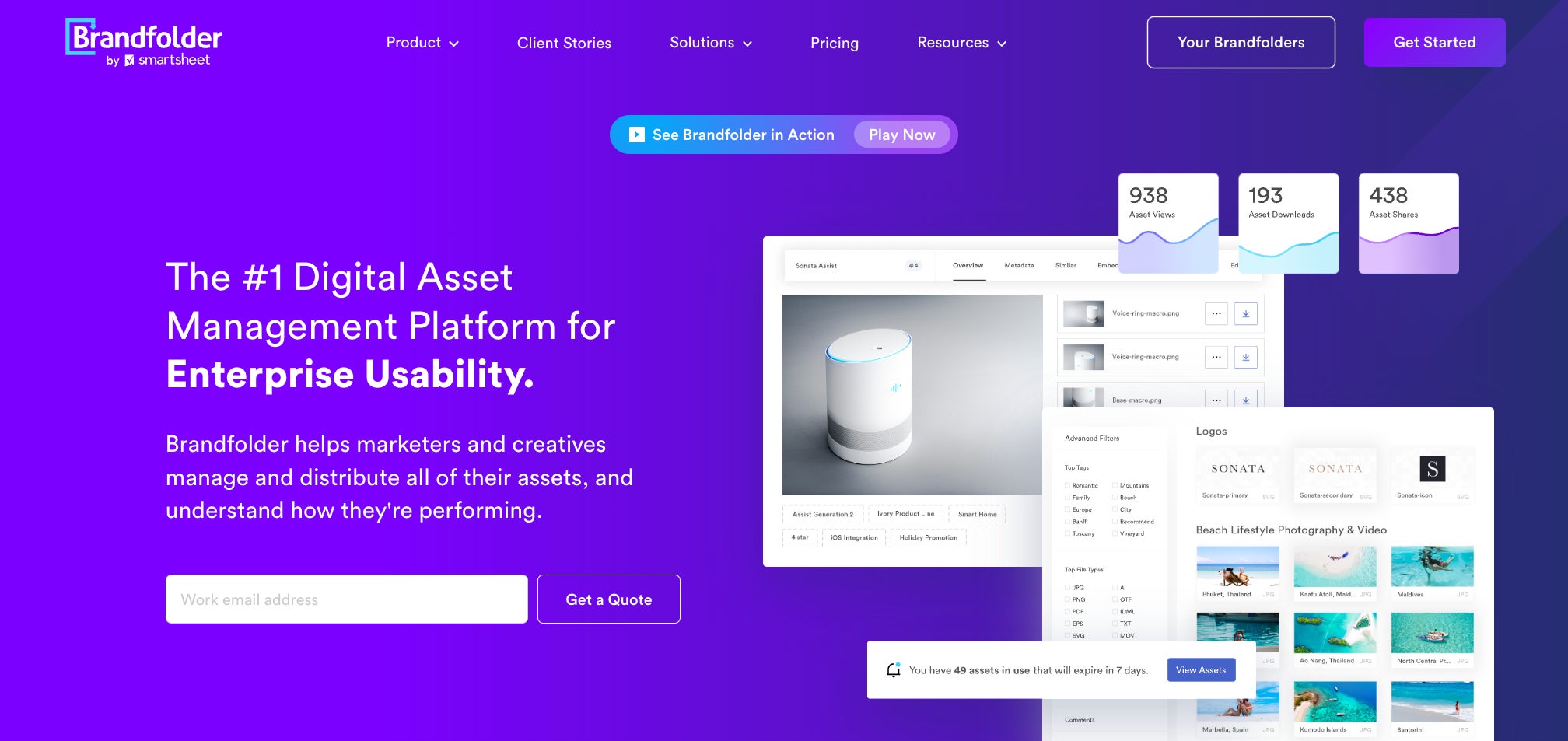
Brandfolder is an entirely cloud-based digital asset management solution (hosted via Google Cloud Services, GCS).
You can access Brandfolder from any web browser, and we follow strict protocols to keep your content secure: we’re SOC 2 Type 2 compliant, use encryption algorithms to protect your content from online threats, provide backups, and have disaster recovery protocols in place to cover you in case of a security incident.
We also have granular security options and can make adjustments on a per-customer basis.
Our DAM is highly reliable because we have a round-the-clock IT team to troubleshoot issues — in a 5-month timeframe (January - May 2023), Brandfolder’s application uptime was greater than 99.9%. Our team also runs regular risk assessments to detect potential threats and implement the proper safeguards.
Read more about Brandfolder security.
We offer complete flexibility during set-up so you can tailor Brandfolder to your teams and workflows. For example, you can:
- Specify your storage space (and adjust as you go).
- Set up integrations to connect Brandfolder with other tools in your tech stack.
- Select add-on features, like Brandguide and Content Automation, to support content creation and help your teams repurpose collateral for new projects.
We have a variety of customer support packages to guide onboarding: we help you prepare for migration, decide how to organize digital assets in your DAM, set up integrations, and onboard users. We even have online tutorials to assist with training, and we’re always here to help after onboarding if you have questions or want to make adjustments to Brandfolder. (That said, most teams need little to no training to use Brandfolder once they’re started on the platform.)
Now, let’s talk about features to manage and use digital brand collateral strategically.
Cloud-Based Storage (With Advanced Features to Preserve Organization)
First (most obviously), Brandfolder provides cloud storage for your brand assets. We accept hundreds of file types and formats — including documents, PDFs, website graphics, marketing assets, images, rich media files like audio files, videos, creative files, and 3D models — so you can use Brandfolder to centralize your brand’s digital content in an accessible online platform.
During upload, you can organize assets in Brandfolders (by brand), Collections (by product line, collateral type, region, campaign, use case, etc.), and Brand Portals (for different end-users, such as sales and marketing teams, partners, or retailers).
Learn more: How to Organize Digital Files for Easy Sharing, Search & Use
We establish automation rules based on your digital asset management taxonomy so Brandfolder automatically places assets in the right location when you upload — no extra clean-up on your part. (We also have high-performance ingestion networks so uploading assets is quick.) Then, Brandfolder AI — Brand Intelligence — adds metadata and tags to assets to improve organization, power the search functionality, and simplify asset retrieval.
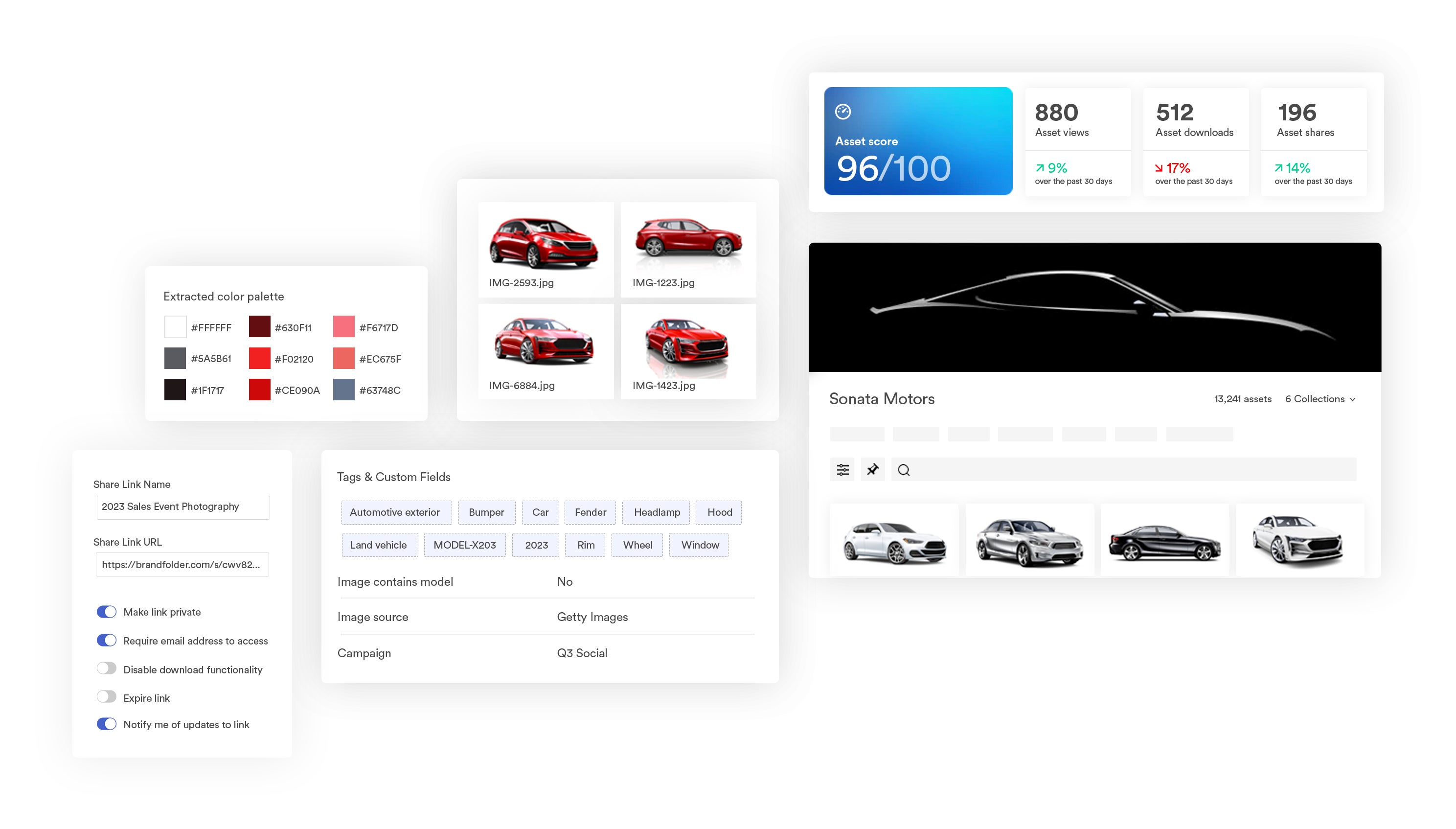
Once you upload files to Brandfolder, we provide features to keep your DAM organized and up-to-date so you don’t experience issues with duplicate assets, version control, or brand (in)consistency. These include:
- Duplicate asset detection: Brandfolder will detect if a file you’re uploading matches one already in your DAM. If it catches a dupe, it’ll prompt you to cancel the upload or store the new file with the original asset (this is useful if you want to keep variations of the same asset together - for example, if you have different versions of your brand logo and want to group them as one asset).
- Expirations: Set assets to automatically expire so you don’t have limited-time or outdated content sneaking into projects. Expired assets are still accessible in your DAM (and can be un-expired if you want to bring an asset out of retirement), but they’re unavailable for download and displayed with a banner so users know they’re not approved for use.
- Permissions: Control how users interact with your asset library and engage with brand content. Select the user role based on the access you want to grant — Admin, Collaborator, or Guest.
- Version history: Brandfolder keeps a detailed version history for every asset so you can see how content is edited over time and track the entire asset lifecycle. An asset’s version history tab updates every time an asset is pushed out of Brandfolder for edits; you can see when the asset was edited, by whom, and the type of changes made.
We also have a Brandguide feature to store brand guidelines in your DAM. This is a great way to provide instructions about asset usage, including details on repurposing assets and where they can be published.
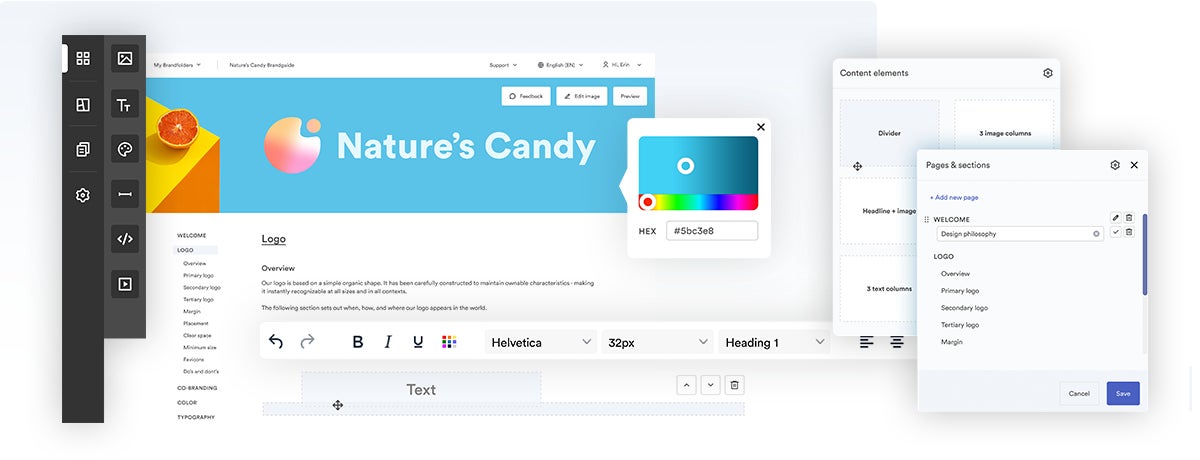
You can also store additional notes in Brandfolder at the asset level — say if you want to provide usage guidelines for a specific asset or include digital rights management information for media assets.
These features ensure all your users can 1) find approved collateral in an easily-searchable, central location and 2) access all the information they need to use assets without going off-brand (or asking designers to double-check their work).
You can also check out our brand consistency checklist to see how Brandfolder keeps users on the same page and digital projects cohesive.
Unlimited Sharing
Brandfolder provides two main options to share digital assets with others: User permissions and custom share links.
We talked a little about user permissions in the last section, but these are a way to share individual assets, or groups of assets like Collections and Brand Portals, with other team members and control what users can do in the DAM (view, download, edit, approve new assets, remove files). Permissions also let you control which features users can access — for example, who can access asset analytics.

Permissions are also convenient because they streamline future sharing: Once you add a team member to a Brandfolder, Collection, or Portal, they can access any new assets you add, so you don’t have to re-share if you add or update files.
You can create custom share links to send assets to users outside the DAM. We allow free unlimited guest seats so you can share assets with anybody, as often as you need, without extra fees. Our custom share links also auto-update when you make edits, so you don’t have to re-send links if you want to add, remove, or update content from the original link.
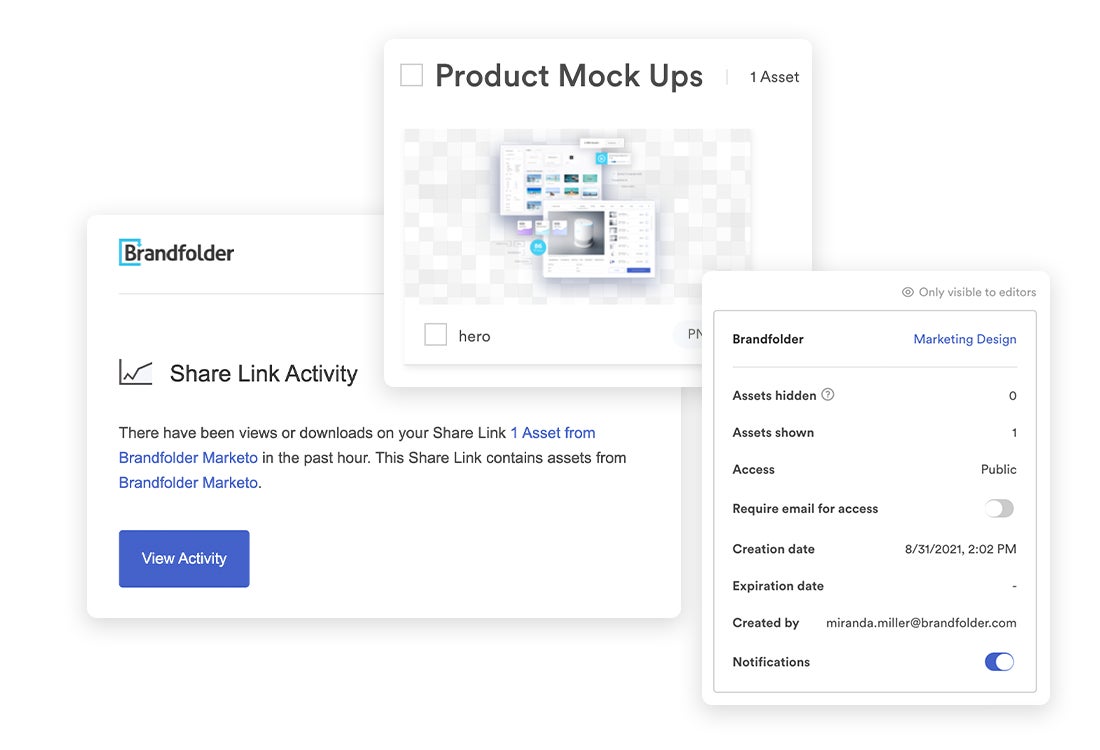
Our share links give you better control over file sharing, too. You can:
- Name share links
- Add or remove assets from share links
- Set share links to expire
- Disable asset downloading (i.e., enable view-only mode)
- Watermark assets
- Require end-users to submit their email to access assets
- Turn on notifications to receive real-time alerts when users open share links or download assets
- Monitor active share links and expire links on demand
Between user permissions and custom share links, you can ensure that everybody who uses your brand collateral can access it when needed. Then, designers don’t have to spend time responding to asset requests, and end-users can work on projects more efficiently.
Tools to Use Brand Assets in Digital Projects
On that note, Brandfolder has features to help non-designers creatively reuse brand collateral. These tools reduce the amount of content that designers have to provide users and make your DAM more self-serving.
- Custom & Preset Crop: Crop assets for specific mediums and online channels without altering the original file. We provide preset crops for popular social media platforms like Facebook and Instagram, but you can save other presets to quickly crop assets for the sites you publish on most frequently.For example, an eCommerce business may save preset crops to coincide with their website design so they can optimize assets while posting them online.
- Convert & Resize: Transform an asset’s file format or resolution upon download to optimize collateral for different sites. Your changes won’t impact the original file.
- Advanced Video Studio: Edit video files inside Brandfolder; make clips and GIFs, trim videos, and add watermarks.
- Content Automation: Create new brand collateral from approved templates. Designers can import these from InDesign (after locking essential design elements, like colors, font sizes, logos, etc.) and place restrictions on how end-users can personalize templates. Then, teams can access templates and customize them for new projects, without going off-brand. This lets non-creatives use available content more productively and prevents designers from being slowed down by repetitive requests.
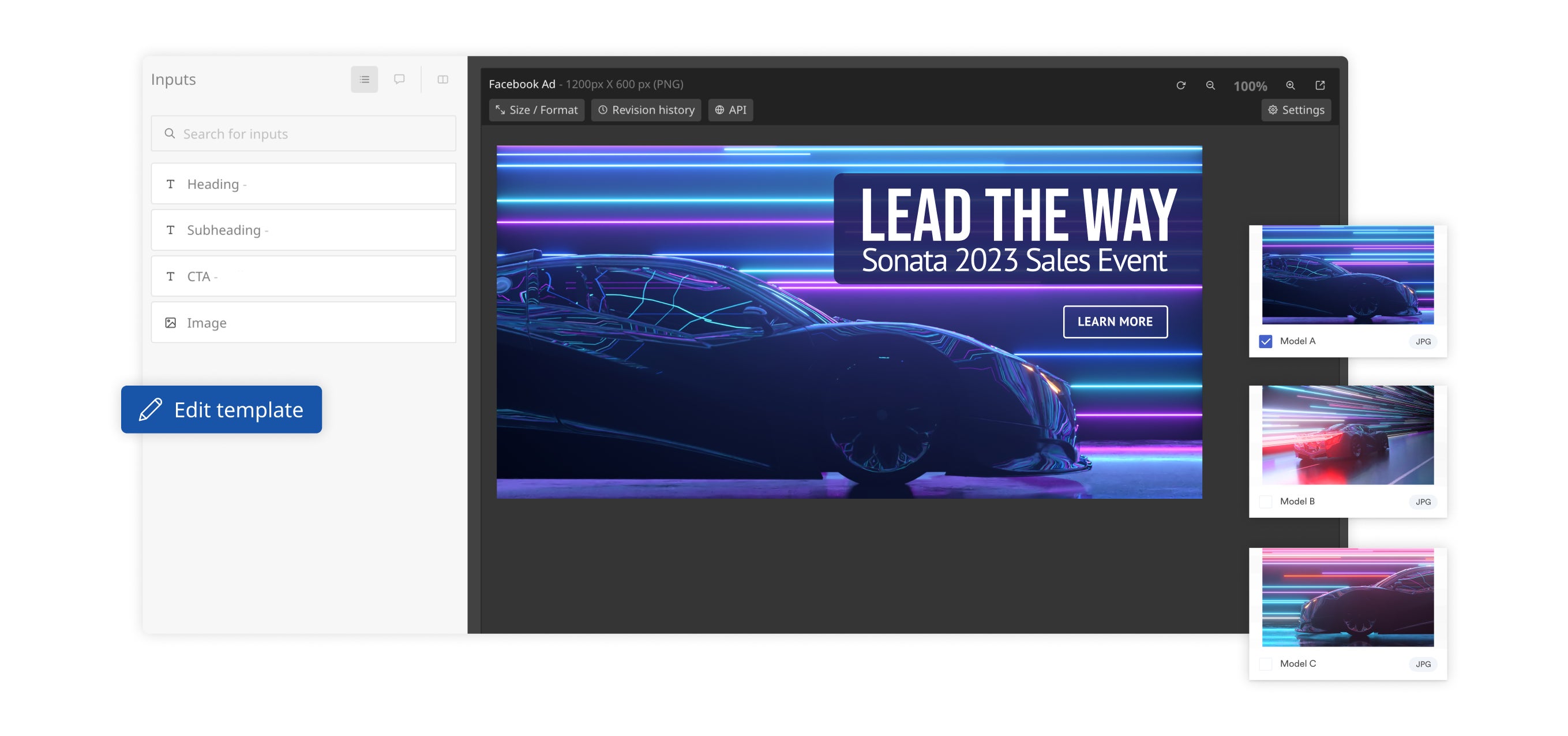
- Built-in CDN network: Brandfolder has a built-in content delivery network (CDN) to serve as a single source of truth and power online publishing. You can publish digital files directly from your DAM by pasting the asset’s CDN link online. We also use HLS streaming to publish your videos in high quality. Publishing with Brandfolder also improves brand management because our DAM automates asset updates — any time you edit an asset in Brandfolder, those changes automatically reflect everywhere the file is published.
- Integrations: Connect Brandfolder with all the tools in your tech stack and push assets into digital projects. We provide dozens of out-of-the-box integrations — for example, we integrate with content management systems like WordPress, graphic design tools like Adobe, workplace collaboration apps like Slack, and more. Brandfolder has an easy-to-use API to accommodate custom integrations.
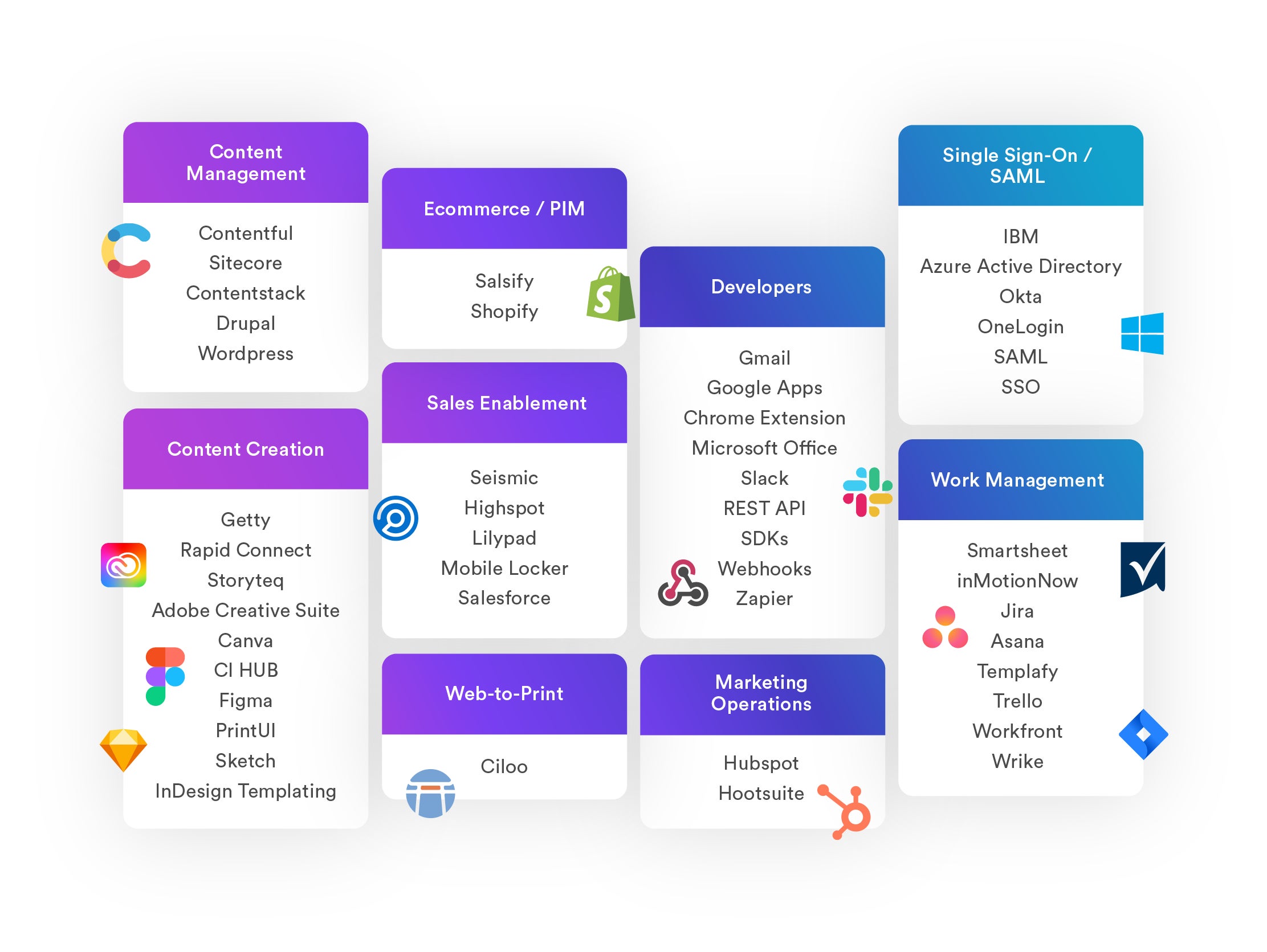
You can also learn about Brandfolder’s digital asset management features for designers in our other guide.
Online Team Collaboration
We built our digital asset management platform with collaborative tools so teams can work together in the DAM.
First, creative teams can collaborate on updates or edits to existing content. Users can comment with team members, export assets to native editing tools for updates, and push assets back to Brandfolder when changes are complete. (Skipping the tedious downloading and uploading between systems.) Then, users can track all of the edits in the asset’s version history.

We also have a Workspace feature so teams can work on digital projects in a unified dashboard. Workspace is designed like project management software and very intuitive, so teams can use it without training. You can:
- Create team projects — for example, if you’re working on a design request, building a website page, or coordinating an upcoming marketing campaign.
- Break projects into tasks.
- Assign tasks to team members.
- Communicate on task cards (view comment threads) and track team progress.

Note: Brandfolder integrates with Smartsheet to provide more robust project management functionality.
Reporting Dashboard
Our DAM also features a reporting dashboard to monitor user activity and measure the success of your brand assets and digital projects.

You can look at reports like Top Users and Top Downloads to see who’s most active in your DAM and which content is most popular. We also provide basic data for each asset, including how often it’s been viewed, downloaded, and shared.
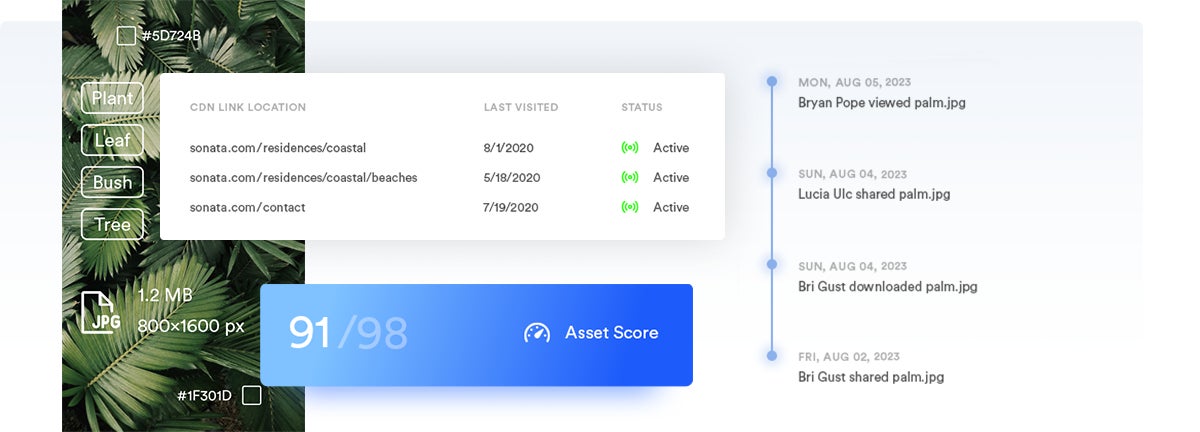
You can create custom reports to dig into usage analytics or look at metrics over different timeframes. You can also share these reports with others if you want to send information to stakeholders.
Brandfolder’s reporting feature provides insights so you can strategically plan new content, brainstorm new ways to repurpose old content, monitor how assets are used, and improve brand consistency.
Read more: Why DAM Is Essential to Support Brand Management Strategies
Best Customer Experience Team in the DAM Industry
Despite the benefits of DAM software, some delay making the switch because they don’t know how to take the first steps or have the resources to move software.
That’s why evaluating customer service is crucial when comparing DAM vendors. Most DAMs are designed for easy implementation, and the benefits once you switch make the efforts well worth it: it’s just about finding the team who can make that happen.
Our customer service team guides every step of the transition so that even small businesses can migrate to DAM software without lengthy onboarding or roadblocks.
We gameplan your digital asset management strategy and walk you through onboarding to ensure you’re set up for success — most teams are up and running in less than six weeks. Of course, we’re available post-set-up to answer questions or make changes to your Brandfolder. Our dedicated customer support is why Brandfolder can work for so many teams and why we have a 98% retention rate.
Read more: 10 Digital Asset Management Best Practices From DAM Experts
Brandfolder is one of the best digital asset management software because it’s fully cloud-based and customizable. But most of all, Brandfolder is highly-rated because our DAM experts take the time to understand your objectives and tailor Brandfolder to support your users. Sign up for a free consultation with our sales team to see how Brandfolder DAM can work for you.
2. Canto: Online DAM for Small Businesses
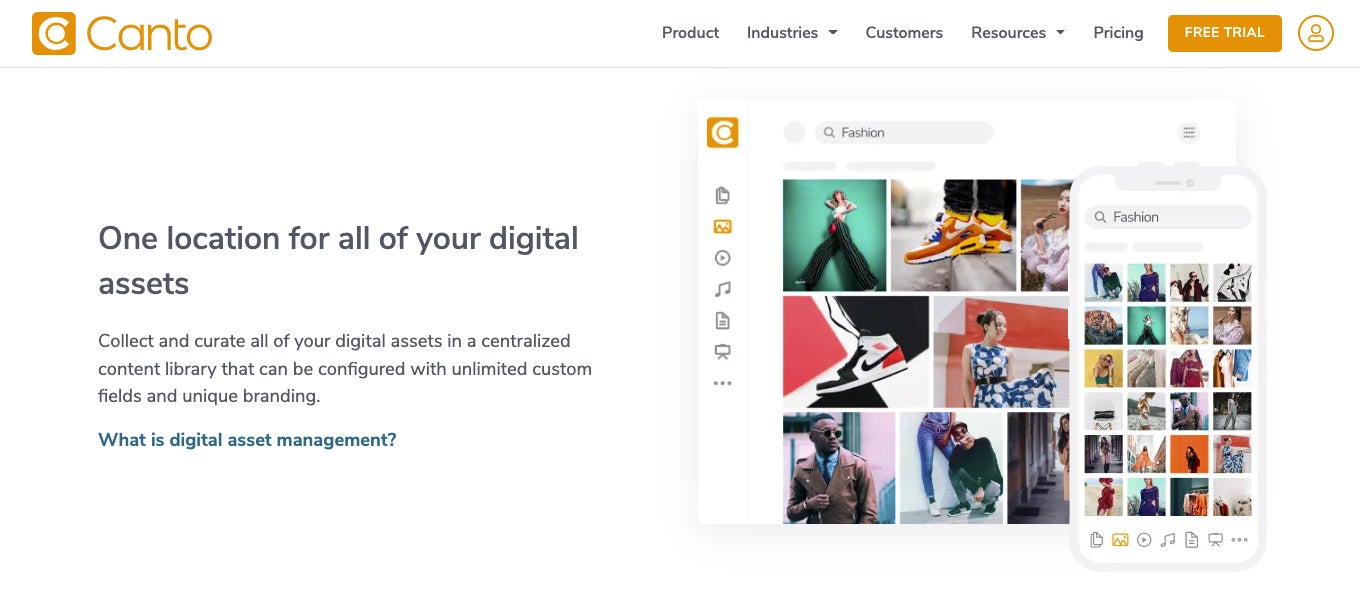
- Security Features: Canto is SOC 2 compliant, runs on AWS (Amazon Web Services), and is housed in highly-secure data centers.
- Pro: Easy to learn, requires minimal training.
- Con: Teams often grow out of Canto and need to upgrade to a more robust DAM; starting with a scalable DAM is better.
- Recommended for: Small businesses, startups, and professionals.
Canto is a cloud-based digital asset management software that’s mostly popular with small and mid-size businesses because it requires minimal training: the interface is straightforward, it operates on a folder/subfolder structure so navigation is familiar, and features are described as user-friendly. That said, some reviews of Canto say the features are a little too simplistic, making for a clunky user experience.
We see mixed feedback when we narrow in on reviews of Canto’s customer support. Most users say that Canto’s team is helpful and quick to respond when you need them. However, they’re really only around on an as-needed basis. The platform is designed for simplicity, so the team isn’t super hands-on during onboarding (users are expected to guide themselves).
In addition to core DAM features, Canto has extra features and functionality: the platform now offers a “Style Guide,” like Brandfolder’s Brandguide, that lets teams store user brand guidelines. They also provide collaboration tools so teams can work together in the Canto platform.
For the most part, Canto is an “entry-level” DAM — it has core DAM functionality, and most customer reviews say that Canto is pretty easy to learn. They also publish tutorials on YouTube to help users adapt to the software.
However, many teams outgrow Canto and eventually want a DAM with more robust capabilities. Although you can toy with Canto to enhance its functionalities, reviewers say that Canto often charges hidden fees that hike up the price of the software when you want to do more than the basics.
For example, Canto doesn’t support free sharing with guest users, so outside sharing is extra. As a result, we don’t recommend Canto for enterprise teams because it’s easier to get a customizable DAM that scales with you from the start.
Note: Canto used to offer on-premise digital asset management software, Cumulus, but has since discontinued that DAM software option. Cumulus users have been transitioned to Canto’s cloud-based DAM.
You can also learn more about Canto and how it compares to Brandfolder in our buyer's guide: Canto Software vs. Brandfolder: Compare Two Top-Rated DAMs
3. Bynder: Online DAM for Enterprise & Global Businesses
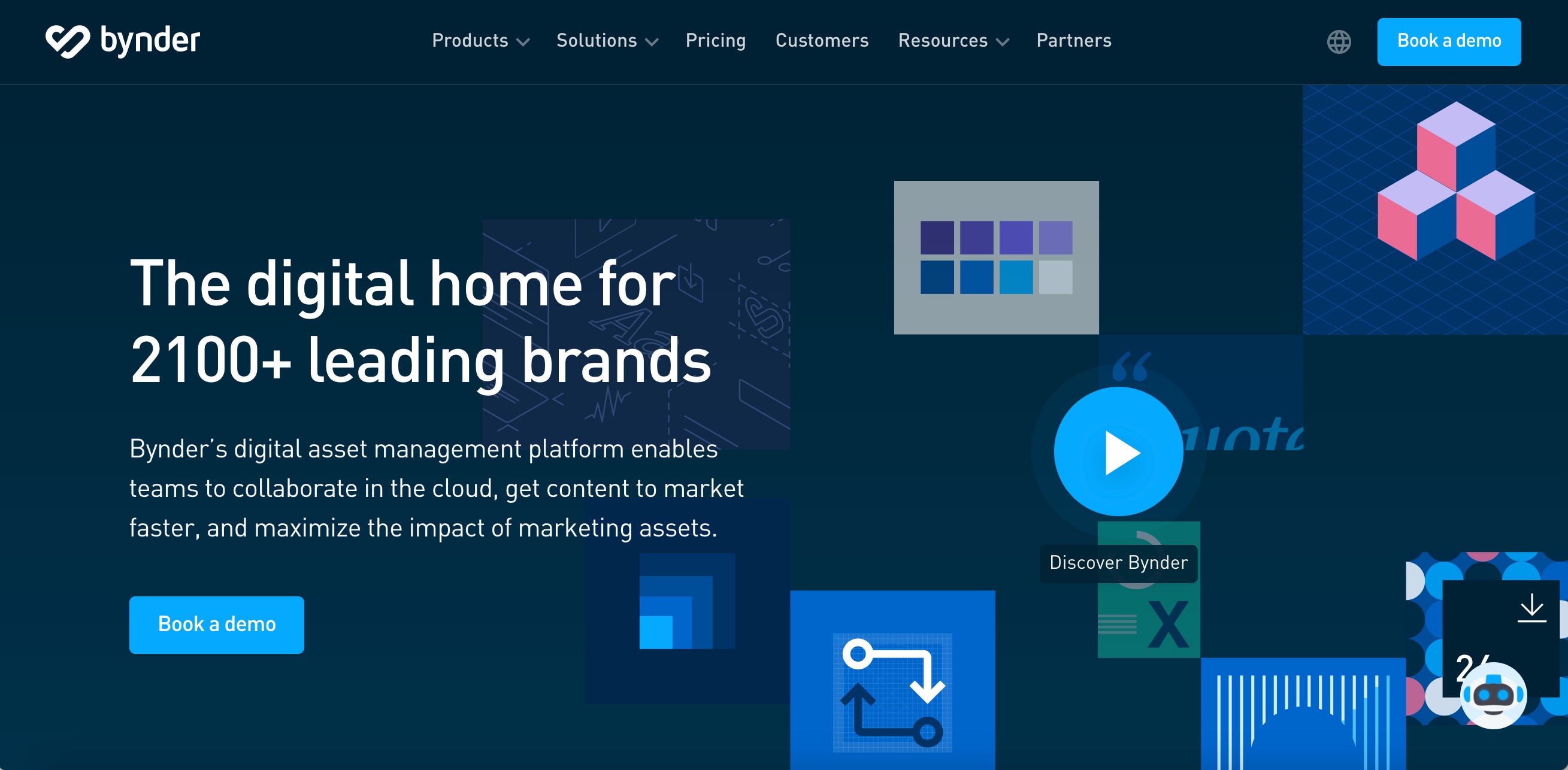
- Security Features: Bynder runs on AWS (Amazon Web Services) and is GDPR, CCPA, and HIPAA compliant. It has also earned a handful of other security certifications — including the ISO 27001:2013 (information security management systems), ISO 27018:2019 (privacy in cloud computing), and ISO 22301:2019 (business continuity management) certifications.
- Pro: Very robust, dozens of features to work with teams and leverage collateral.
- Con: Customer support is helpful during onboarding, but learning the software, keeping up with updates, managing content within the software, and adding new users can pose challenges; current users recommend having a dedicated “DAM manager” to oversee Bynder operations.
- Recommended for: Enterprise businesses that want a robust DAM and have the resources to manage onboarding and training.
Bynder is a top-rated DAM software because it’s versatile, scores well in terms of usability, and can be tailored to support specific goals and business needs. They’re also popular for remote teams or field service teams because they offer mobile apps for iOS and Android.
Bynder is often compared to Brandfolder because both DAMs offer advanced features to use brand assets in digital projects (for example, both DAMs have video editing features and templating). Both solutions are also customizable to scale with your business. However, reviews of Bynder suggest it can be harder to adopt and manage — despite Bynder’s support services.
The platform offers advanced features, but navigating between tools and fully understanding how to use them can be confusing. Plus, the platform and features frequently undergo updates, but Bynder doesn’t give a heads-up about what to expect. It can be hard to keep users up to speed or add new users to the platform without spending time on training.
As a result, Bynder is not a realistic option for most small businesses, and the onboarding process can be unnecessarily long, even for large teams with resources. However, it’s still a popular option for global teams with the bandwidth to adopt this robust DAM.
You can also learn more about Bynder’s DAM in our comparison guide: Bynder Alternatives: How Brandfolder & Other Competitors Compare
Honorable Mentions: Other Online DAMs to Know
In addition to Brandfolder, Canto, and Bynder, here are a few other names you’ll see on best DAM software lists:
1. Widen Collective: Widen is a digital asset management + product information management (DAM + PIM) software for teams that need to manage both digital files and product information. This DAM is popular with eCommerce, retail, and manufacturing companies. It has an expensive price tag and is usually recommended for larger teams, but it’s also a good option for mid-size businesses that need sophisticated product information management functionalities within their DAM system.
Read more: 6 Best Alternatives to Widen Collective: Buyer's Guide
2. MediaValet: MediaValet is DAM software for creatives, marketing teams, and advertising agencies. It’s designed to scale with organizations of all sizes and has pricing options for small businesses. MediaValet offers dozens of advanced features to use media assets in digital projects (hence the name). However, the platform has been described as outdated and a little hard to use. MediaValet does compensate for this with its customer support — rated as one of the best in the DAM industry. They help through the entire set-up process and are highly responsive when you reach out.
Read more: MediaValet Reviews: Brandfolder vs. MediaValet DAM (2023)
3. Intelligence Bank: Intelligence Bank is a digital asset management system with extra creative tools for marketers, social media, and sales teams so they can repurpose marketing materials for new campaigns and audiences. They offer secure cloud storage, convenient features like automatic uploads and AI auto-tagging, and trackable file sharing features. They also appeal to the above audiences because they offer brand management tools to track where your content lives (who has access to it, how it’s used, and where it’s published online). IntelligenceBank advertises its DAM as “marketing operations software” — it’s typically recommended for enterprise companies with large (or growing) marketing departments.
Read more: #1 Tool for Marketing Collateral Management: Brandfolder DAM
4. Filecamp: Filecamp is a DAM for small teams — specifically, designers and creative agencies. It has features to work with rich media, collaborate with team members online, share collateral with stakeholders, and improve brand management. While Filecamp focuses on creative functionalities, it also advertises itself as brand management software, with features like personalized branding options and online proofing. Filecamp is suitable for teams that have a smaller content library and want to prioritize creative collaboration.
Read more: Best Filecamp Alternatives for Mid-Size & Enterprise Teams
5. Image Relay: Image Relay is a competitor to Widen because they combine the benefits of DAM and product information management software under one roof. They provide various tools to bring products to market and repurpose content for new projects (website pages, marketing newsletter, social media promotions, etc.). The platform lets you store critical asset metadata, product information, and details about the asset’s use case to support workflows and guide users. The platform also integrates with dozens of tools to streamline distribution across online channels; you can publish content to your eCommerce site, drop media into newsletters, or build website and blog content. This DAM option is recommended primarily for social media and content marketing teams that have a lot of creative collateral to manage and post online.
Make the Move to Online DAM Software
Online digital asset management software is the natural next step once cloud storage solutions become too messy to manage. Brandfolder makes organizing, sharing, and using assets easier, and it’s customizable so you can optimize the DAM to support unique business objectives and the different users that rely on your brand collateral.
Our customer experience team can help you move to DAM software, set up Brandfolder around your users and goals, and adjust the DAM as your business grows. Get started with a free demo of Brandfolder.
Related reads:
